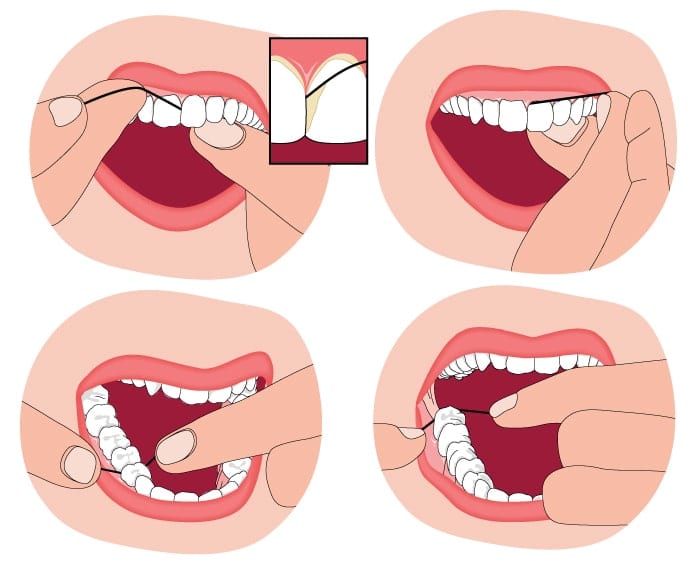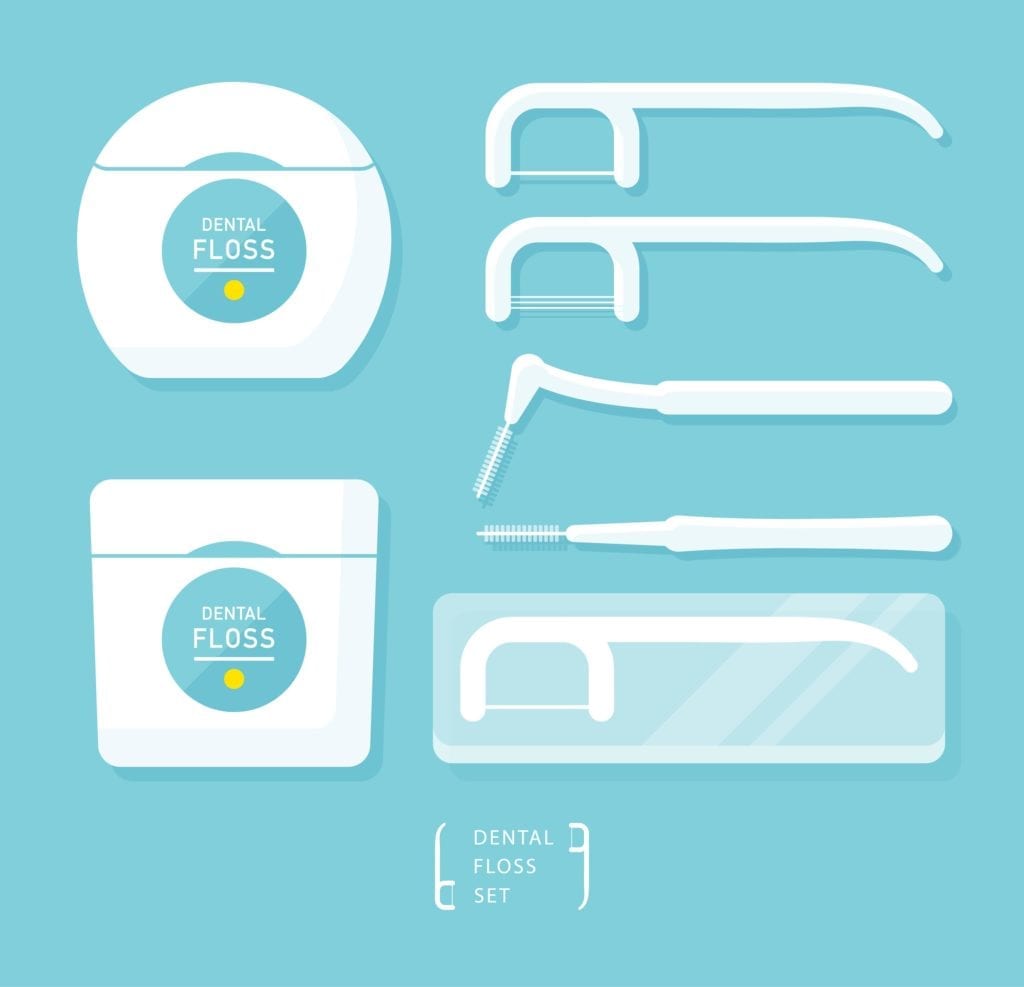Many people know they are supposed to brush their teeth twice a day and floss at least once a day to remove excess plaque and bacteria from the surface of their teeth. While brushing twice a day is a common practice, unfortunately the same cannot be said for flossing daily. Not only is flossing regularly an important part of maintaining your oral health, but also flossing correctly. There are certain mistakes that dentists notice their patients make while flossing and it is important to address and correct these mistakes. Here are some of the most common flossing mistakes:

Forgetting Places
When you floss your teeth, you need to make sure that you floss all the areas that need to be flossed. This means in between each tooth, along the sides of each tooth, behind the last molars, and around any dental restorations or appliances. In the case of fixed appliances or certain restorations, a special type of floss may be required.
Being Inconsistent
It is recommended that you floss your teeth at least once a day, however many people tend to skip days here and there or just forget entirely. Unfortunately being inconsistent with your flossing routine makes it less effective since plaque accumulates everyday. Therefore, it is important to write yourself a note so you don’t forget and make sure you set aside a little time each day to floss your teeth. Flossing daily doesn’t take long and it can save you a great deal of time spent in the dentist’s chair.
Irritating Your Gums
The whole point of flossing is to remove plaque from between your teeth, not to irritate your gums. Unfortunately, using an incorrect technique can cause gum irritation that can result in bleeding and possible gum recession. To prevent this from happening, don’t apply pressure to the gums with floss. This can be accomplished by flossing in a downward direction on the top teeth and an upward motion on the bottom teeth.
Being Too Enthusiastic
Although this mistake is not nearly as common as the others, it is still important to discuss. Being too enthusiastic and flossing too much or too rough can be damaging to your gums and can also result in irritation. Ideally, you only should floss once a day and you should make sure your technique is not too rough.

Using the Wrong Floss
There are several different types of dental floss that you can use to make your daily flossing routine easier and more comfortable. Doing some research before you head to the store allows you to see what types of floss may work the best for you. They even have special floss to help reach around dental appliances and restorations.
Flossing at the Wrong Time
The best time to floss is at night before you go to bed and just before you brush your teeth. Flossing before brushing, allows the fluoride in your toothpaste to get into the crevices between your teeth. Brushing and flossing before bed removes any plaque and food debris that has accumulated throughout the day. This is important because your saliva production decreases while you sleep, meaning your teeth are more susceptible to bacteria.

Dr. Admar holds dual certificates — a Bachelor of Dental Surgery (BDS) in 2010 from India and a Doctor of Dental Surgery (DDS) in 2014 from Canada. He is now a full time practicing dentist in Kamloops where he provides a variety of services. Dr. Admar spends hundreds of hours in continued dental education to stay up to date in cosmetic and implant dentistry and he has achieved several advanced qualifications.


